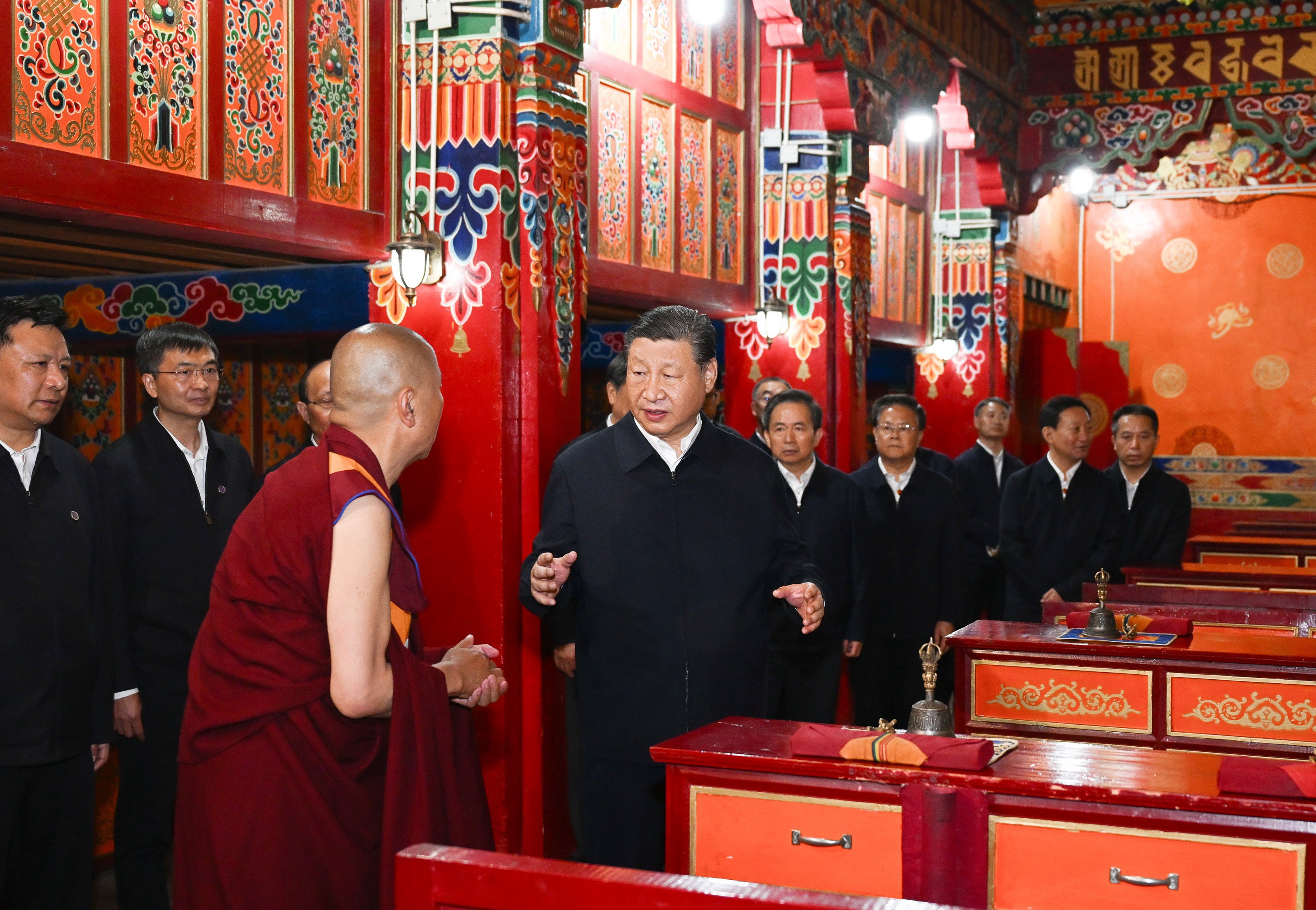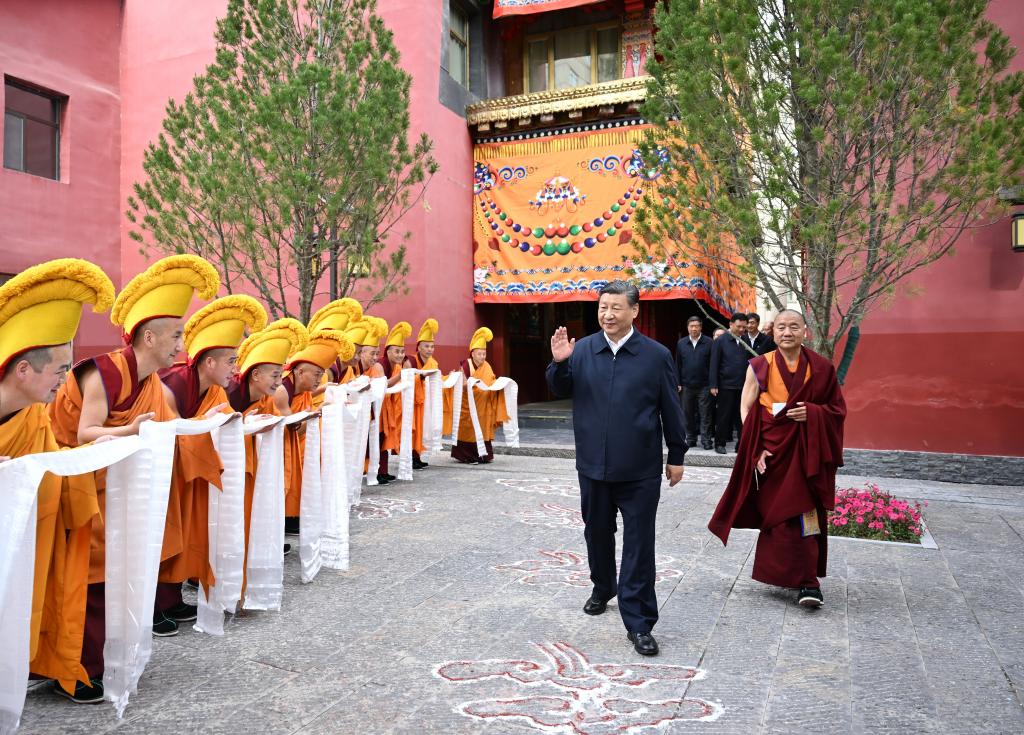Discovering Xining’s Tibetan Buddhist Culture and Historical Legacy
Welcome to the enchanting world of Xining, where ancient traditions and vibrant cultures converge on the edge of the Tibetan Plateau. As a gateway to China’s western frontiers, Xining offers travelers a unique blend of Xining Tibetan Buddhist Culture and rich historical depth, making it an essential stop for anyone exploring China Tibetan history. Nestled in Qinghai Province, this city is a tapestry of spiritual sites, diverse communities, and breathtaking landscapes that inspire awe and curiosity. Here at jusha.travel, we love sharing tips to make your China journey unforgettable, from uncovering hidden cultural gems to navigating the practicalities of travel in this lesser-known region.
If you’re a culture enthusiast or a first-time visitor to China, delving into Xining cultural heritage provides an immersive experience that goes beyond typical tourist spots. Imagine wandering through sacred monasteries, sampling local cuisine, and witnessing rituals that have been practiced for centuries. In this post, we’ll guide you through the highlights, blending historical insights with practical advice to enhance your adventure. Let’s dive in and discover why Xining is a must-visit for China cultural tours.

Xining: The Gateway to Tibetan Buddhist Culture
Xining, the capital of Qinghai Province, has long been a crossroads of commerce, culture, and spirituality, serving as the eastern gateway to the Tibetan Plateau. For over 2,100 years, this city has facilitated exchanges along the ancient Silk Road, blending influences from Han Chinese, Tibetan, and other ethnic groups. This fusion is at the heart of Xining Tibetan Buddhist Culture, where you’ll find a harmonious mix of traditions that reflect the city’s role in China Tibetan history.
One of the first things you’ll notice is Xining’s diverse demographic, including Tibetan, Han, and Hui communities, which creates a vibrant atmosphere in its markets and streets. For instance, the city’s location made it a key point for trade in goods like wool and salt, but more importantly, it was a conduit for religious ideas. According to historical accounts from [Xining – Wikipedia](https://en.wikipedia.org/wiki/Xining), this area was once controlled by Tibetan forces, embedding deep Buddhist roots that persist today.
As a traveler, a practical tip is to start your visit with a stroll through the city’s central areas. Join a local Xining travel guide tour to learn about the ancient Hexi Corridor, which was part of the Northern Silk Road. This not only enhances your understanding of Cultural attractions Xining but also offers insights into modern China. For example, you might encounter technology-savvy guides using apps to translate prayers or highlight virtual tours of historical sites, blending tradition with contemporary innovation—a nod to China’s rapid tech advancements.
Don’t miss trying Qinghai’s famous yak butter tea or tsampa (roasted barley flour), which are staples in Tibetan Buddhist communities. These foods not only sustain the body but also carry cultural significance, often shared during festivals. By immersing yourself here, you’ll gain a deeper appreciation for how Xining cultural heritage continues to thrive amidst China’s dynamic landscape.

The Historical Evolution of Xining and Its Tibetan Influences
To truly grasp Xining Tibetan Buddhist Culture, we must explore its historical evolution, a story of conflict, trade, and coexistence that has shaped China Tibetan history. Originally known as Linqiang during the Han Dynasty, Xining evolved from a frontier settlement into a bustling intercultural hub. By the Tang Dynasty, it was a battleground for Tibetan forces and Chinese empires, eventually being renamed “Xining” meaning “peace in the west” during the Song Dynasty—a testament to its resilient spirit.
This evolution is evident in sites like the ancient walls and ruins that dot the city, showcasing a blend of architectural styles from different eras. For history buffs, visiting these areas provides a fascinating glimpse into how Tibetan Buddhism took root here. As detailed in [Xining – Wikipedia](https://en.wikipedia.org/wiki/Xining), the city’s strategic location along trade routes allowed for the spread of Buddhist teachings, influencing everything from art to daily life.
When planning your trip, consider the practical aspects of exploring these historical sites. Xining’s altitude—around 2,200 meters—means it’s wise to acclimatize first to avoid altitude sickness, a common tip for travelers in western China. Use reliable transportation like high-speed trains from major cities like Lanzhou, which connect you efficiently while offering scenic views of the plateau. This is where Xining travel guide resources, such as those on [Xining: A Cultural and Natural Journey](https://www.lingoace.com/blog/xining-a-cultural-and-natural-journey-in-chinas-plateau-city-en/), come in handy, providing maps and itineraries tailored for cultural explorers.
An interesting fact: Xining’s multi-ethnic fabric has led to unique festivals, like the annual horse racing events that incorporate Tibetan Buddhist rituals. These gatherings not only celebrate Cultural attractions Xining but also promote unity among communities. For food lovers, pair your historical tour with a taste of Hui-influenced lamb skewers or Tibetan-style noodles, reflecting the city’s culinary diversity—a perfect example of how China cultural tours can engage all the senses.

Exploring Kumbum Monastery: A Pillar of Tibetan Buddhist Heritage
No discussion of Xining Tibetan Buddhist Culture would be complete without highlighting Kumbum Monastery, also known as Ta’er Temple, one of the most significant Cultural attractions Xining. Founded in the 16th century at the birthplace of Tsongkhapa—the founder of the Gelug school of Tibetan Buddhism—this site is a living museum of faith and art. As per [Kumbum Monastery – Wikipedia](https://en.wikipedia.org/wiki/Kumbum_Monastery) and [Himalayan Glacier Trekking](https://www.himalayanglacier.com/kumbum-monastery/), the monastery was established by the third Dalai Lama and has since become a pilgrimage center attraction devotees from across Tibet and beyond.
Step inside, and you’ll be mesmerized by the intricate murals, butter sculptures, and embroidered thangkas that adorn the halls. These artworks aren’t just decorative; they tell stories of Buddhist legends and teachings, preserving Xining cultural heritage for future generations. The monastery’s annual Monlam Prayer Festival, held in the first month of the Tibetan calendar, is a spectacle of chanting, dances, and offerings, offering visitors a chance to witness authentic rituals.
For practical travel tips, plan your visit early in the morning to avoid crowds and participate in the monks’ circumambulation rituals—a meditative walk around the sacred sites. If you’re interested in technology’s role in preserving culture, note that many monasteries now use digital archives to document their collections, aligning with China’s push for cultural digitization. This makes Kumbum an ideal spot for China cultural tours, where you can combine spiritual reflection with modern insights.
Moreover, Kumbum exemplifies China Tibetan history through its architecture, which fuses Tibetan, Han Chinese, and Mongol elements. A fun fact: The “Tree of Great Merit” on the grounds is believed to have grown from Tsongkhapa’s hair, symbolizing the enduring legacy of Tibetan Buddhism. Whether you’re meditating in the prayer halls or exploring the surrounding hills, this site offers profound cultural insights that will enrich your journey.

Rituals, Art, and the Living Spirit of Xining’s Communities
Beyond the grand structures, Xining Tibetan Buddhist Culture thrives in the everyday rituals and artistic expressions that define the city’s communities. At Kumbum Monastery and beyond, practices like butter sculpture creation and embroidered barbola artworks showcase the creativity embedded in China Tibetan history. These aren’t static relics; they’re part of a living tradition, as noted in [Xining: A Cultural and Natural Journey](https://www.lingoace.com/blog/xining-a-cultural-and-natural-journey-in-chinas-plateau-city-en/), where locals use these arts to narrate stories of faith and resilience.
Xining’s multi-ethnic environment, including Tibetan, Hui, and Han residents, fosters a sense of coexistence that influences everything from religious ceremonies to street festivals. For travelers, engaging in a Xining travel guide led activity, such as joining a butter sculpture workshop, provides hands-on cultural immersion. It’s a great way to learn about the symbolism in these creations, like how butter sculptures represent impermanence in Buddhist philosophy.
In terms of practical advice, respect local customs by dressing modestly and asking permission before photographing rituals—cultural sensitivity is key in China cultural tours. You’ll also find that Xining’s food scene reflects this diversity; try momos (Tibetan dumplings) or halal Hui dishes, which highlight how cuisine bridges communities. An intriguing insight is how technology, such as social media, helps spread awareness of these Cultural attractions Xining traditions, allowing global audiences to appreciate Xining cultural heritage virtually.
This section of your trip underscores the dynamic nature of Xining cultural heritage, where ancient rituals adapt to modern life, inspiring visitors to reflect on their own cultural connections.
As we wrap up our exploration of Xining’s treasures, it’s clear that this city is a profound embodiment of Xining Tibetan Buddhist Culture, offering layers of history, spirituality, and community that enrich any China cultural tours. From the historical crossroads that shaped China Tibetan history to the vibrant Cultural attractions Xining like Kumbum Monastery, you’ll leave with unforgettable memories and a deeper appreciation for the region’s heritage.
Here at jusha.travel, we’re passionate about guiding travelers like you to discover the heart of China. Whether you’re planning your next adventure or reflecting on past journeys, we encourage you to share your thoughts in the comments below, visit jusha.travel for more inspiring articles, or explore related guides on our site. What aspects of Xining are you most excited about? Let’s keep the conversation going and make every trip a story worth telling!

